Rotating Machinery: How Simulation can help SMEs to design efficient pumps, fans or compressors faster
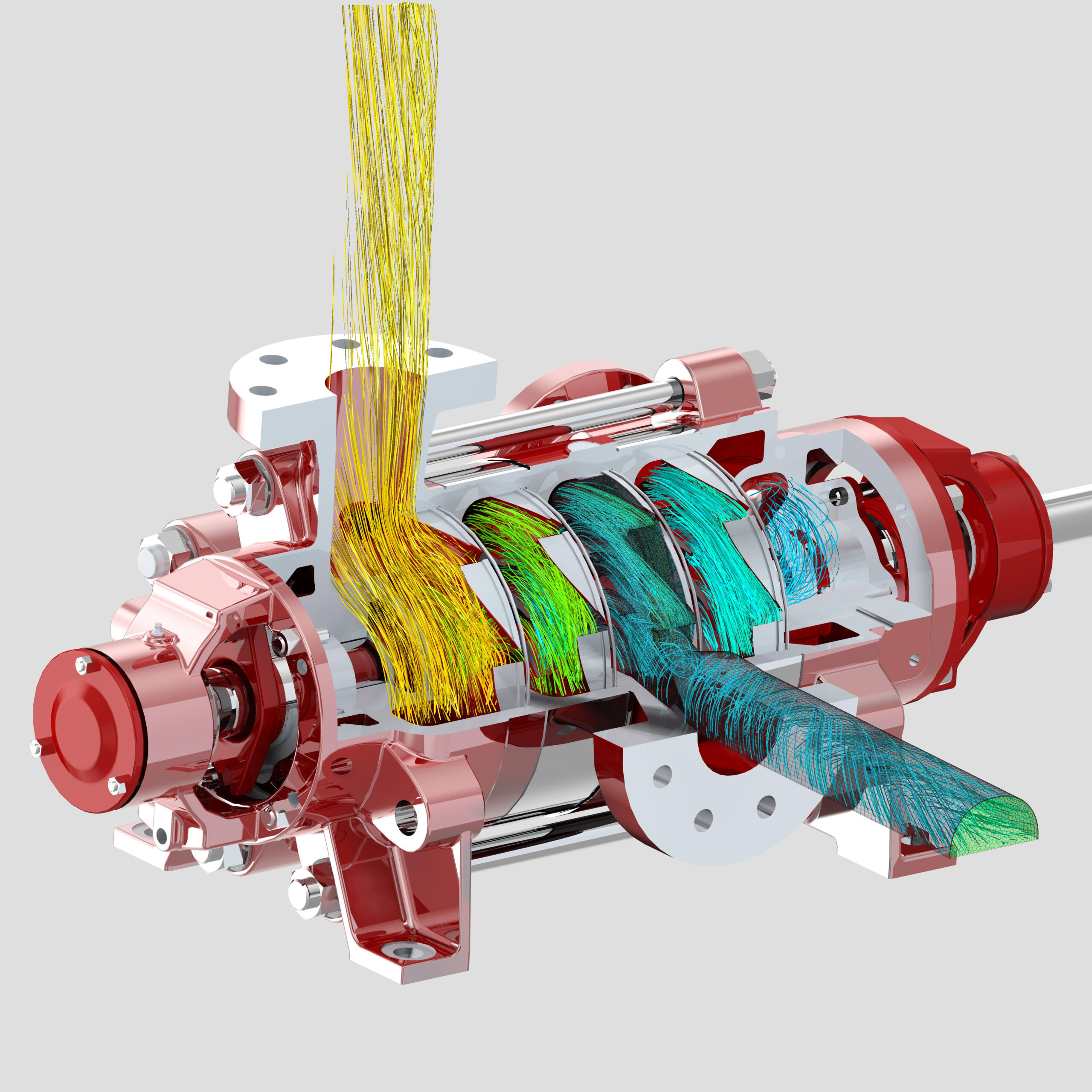
We are surrounded by rotating machinery. Pumps, fans, compressors or turbines can literally be found everywhere: In cars – air conditioning fans, turbochargers, pumps for fuel or water, coolant pumps for engine and battery cooling. In our buildings and offices – from heat pumps to refrigerator compressors, hairdryers or electronic cooling fans in computers. And of course the industry and energy sector would never work without massive employment of turbomachinery.
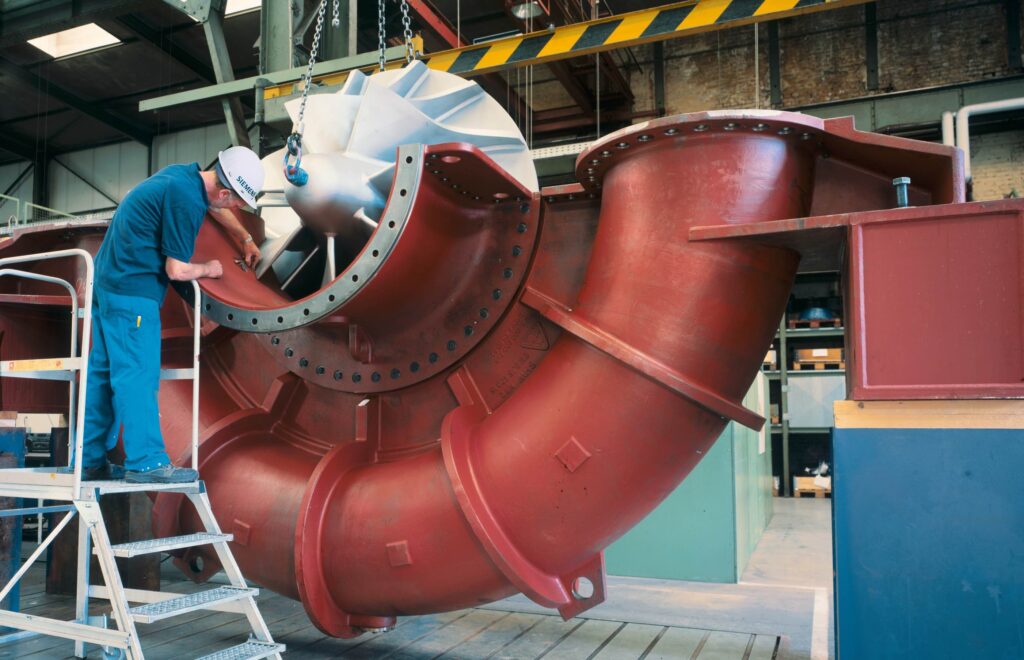
The dimensions of impellers and housings range from the size of a industry hall – like for gas turbines – to only a few millimeters – for example for incorporate blood pumps. A vast variety of different fluids and gases that can have rather challenging properties need to be transported, like chemicals or other aggressive media, hot gases or particle loaded fluids. Sometimes phenomena like phase change or multi-phase flow or the interaction of the fluid with the solid parts need to be taken into account. Medical applications like blood pumps (see more details in the example pointed out below) or respiratory equipment need to be compliant with strict medical technology regulations. Also food & beverage applications require high hygienic standards, and there are of course always safety requirements that must be fulfilled.
Traditional Design versus Computational Methods
There are several approaches to design a pump, fan, compressor or turbine. The first step is to decide about the basic concept, and to determine the impeller type: Will it rather be an axial, a radial or a mixed flow impeller? With or without stators, guide vanes, diffusors, volutes or housings? Will it be a single- or rather a multi-stage machine?
The “traditional” way then is to use analytical equations to define the main dimensions as well as the flow angles and thus the shape of the blades. The calculations are based on the required duty data – volume flow, pressure rise or pump head for the design operating point, the rotational velocity and fluid properties. Available installation space, the type of electrical drive as well as the materials of the impellers and housings can also be relevant. The blade and housing design can be performed by using either commercially available or custom software tools, spreadsheets or even paper-and-pen based approaches.
In reality, industrially relevant flow processes are turbulent and three dimensional – this is even more relevant for flow through rotating machinery. Such “real world effects”, as well as blade thickness, blade number, or the influence of tip clearings or secondary flow paths are neglected or only taken into account via empirical information by the usually applied design tools. The gap between the idealized and the real system can be closed with the help of Simcenter simulation approaches, modeling also the most complex physical behavior and geometry details with high accuracy.

Design from Scratch or Incremental Development?
It is common practice for many manufacturers to incrementally modify already existing designs instead of creating a completely new machine from scratch. After the changes are implemented, prototypes need to be build and tested experimentally. The procedure is typically repeated several times to find a design fulfilling the respective requirements, which can be costly and very time consuming. Furthermore, with such an approach developers and engineers sometimes tend to rather stay in their comfort zone, thus missing potential for more efficiency and innovation. This can be avoided by applying 3D CFD computations or even systematic optimization methods, comprehensively involving the complete available design space.
Design Space Optimization for Rotating Machinery
Design improvements typically require numerous iterations through trial and error. By leveraging automatic optimization techniques , machines can be designed significantly faster.
Simcenter allows to systematically optimize a design. Different blade parameters can be made accessible as variables during the design exploration, thus representing the blade-shape, the main dimensions and number of blades.

In that way, also contradicting simulation objectives – for example increasing pressure rise or pump head while at the same time reduce power – can be tackled.
The chart shown here illustrates the tradeoff between the two objectives. Every dot in the diagram stands for one impeller design point. The blue line represents a so-called pareto front, where one objective cannot be improved without changing the other one for the worse. In doing so, hundreds of pump impeller designs can be compared.
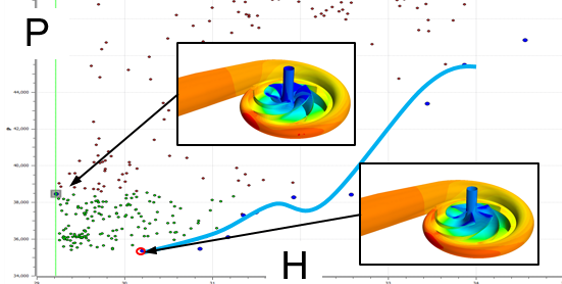
Solving Operational Challenges with Advanced Flow Behavior Modeling
A very typical and frequent challenge is cavitation in a pump, occurring when the static pressure in a flow drops beneath the vapor pressure of the fluid, forming gas-filled bubbles. These are carried away downstream with the flow, and decay again when reaching areas of higher pressure. This can lead to unwanted or even dangerous effects like noise, damage of structures or vibration.
An example for dealing with cavitation with the help of Simcenter STAR-CCM+ simulations is demonstrated by MORFO (Morfo Design Srl), a startup and spin-off from the University of Florence, specialized in the aerodynamic development of turbomachinery, who has pioneered the integration of parametric and optimization tools with Simcenter STAR-CCM+.
The pump inducer shown here increases the pressure of the cryogenic fluid while minimizing cavitation issues, which arise due to the thermodynamic conditions at the inlet (low pressure relative to temperature). It is thus significantly improving the overall quality of the pump. MORFO has parametrized the inducer with “Papillon”, their own graphical interface. Simcenter STAR-CCM+ was then used to perform a CFD study and optimization, using various modelling capabilities to represent complex phenomena like phase change and gas bubble formulation and transport as well as the interaction of the bubbles with the fluid flow. To be able to evaluate the inducer’s efficiency and it’s robustness against caviation, it is crucial both to represent cavitation mechanisms accurately and to examine also off-design by varying the flow rate. The development goal here was to maintain a constant flow rate and determine the lowest possible total inlet pressure without the inducer significantly losing performance in terms of compression ratio.

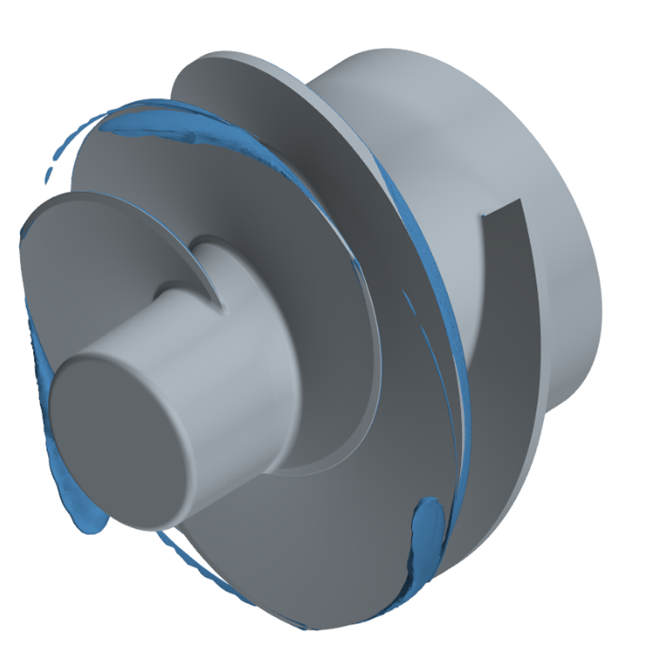
Modeling Flow Behavior of Specialized Fluids: Medical Blood Pumps
Another realm where complex flow behavior must be taken into account are medical devices. Pumps are used for several medical applications, for example for live-support machines, where they are used to maintain blood circulation in emergencies or during surgeries, for ECMO (extra-corporate membrane oxygenation), or as dialysis or infusion pumps.
For blood pumps, it is crucial to operate in a blood-friendly manner and reduce hemolysis – destruction of blood cells – as well as thrombogenicity – clotting of the blood. This can be achieved with the help of 3D CFD by limiting the shear stress in the fluid, keeping the blood temperature below body temperature, and also by trying to avoid stagnating or recirculating flow areas.

Computational Fluid Dynamics is able to provide detailed insights into the non-newtonian blood fluid flow and allows to optimize the pump accordingly. Good pump efficiency means low power consumption and is an important goal as well.
Terumo Corporation is developing next-generation technology, including diagnostic devices, therapeutic devices, myocardial regenerative therapy, and devices for emerging markets and is using
CFD to develop blood pumps for cardiovascular surgical devices. Introducing a CFD-based design exploration tool allowed to increase the efficiency of blood pump development, deal with variations of the blood properties and eventually bring a better design to market faster. The exploration team is not a specialized CAE department, but is using CFD together with optimization techniques in order to both increase the efficiency of the product development process and bring a better design to market faster.
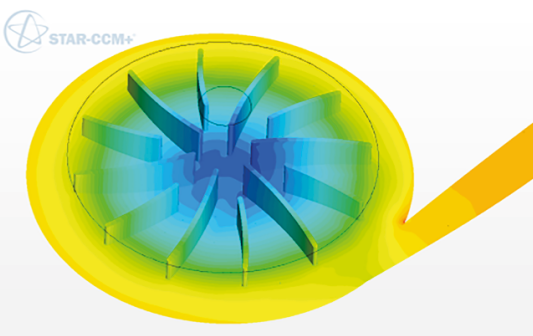
pump impeller and volute
Benefits for SME: Generate Efficient Rotating Machines, Faster!
Many SMEs are often bringing specialized solutions to the market. Design tools for impellers and housings have been used for decades and are based on simplified assumptions and empirical information, but to allow for real-world physical behavior, often costly trial-and error test procedures need to be performed yet. 3D CFD can be a good alternative to extensive physical testing, allowing insights which are not possible experimentally. By systematically exploring the design space, higher quality can be reached in less time. Sophisticated, automated workflows enable engineers and developers to focus more on engineering challenges rather than spending excessive time on modeling tasks and allow to leverage simulation technology also for non-experts.
Of course also other disciplines beyond CFD, like structure mechanics, can be tackled with Siemens software products.
As a result, engineers and developers can allocate more time and effort towards dealing with complex engineering challenges, analyzing simulation results, and implementing innovative design improvements. The use of Simcenter simulation, available via scalable licensing and pricing, thus empowers them to make informed decisions, enhance performance, and optimize the overall design process, resulting in faster time to market and higher quality.


